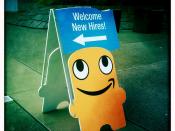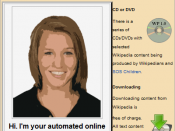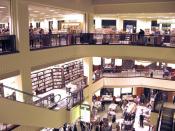1. Introduction:
In the past few years, the world saw lots of changes in online retailing. In this B2C e-commerce model, the combination of screen-to-customer interfaces, network effects, real-time competitive responses, and one-to-one customization leads to "value increases" for both the customer and the firm. In general, more and more customers can use online shopping with confidence, while more and more companies recognized that online retailing is no longer an option but a business requirement.
The United States is by far the global leader in the B2C e-commerce arena. Up to now, books are still the top-selling products online. So we will look at U.S. online bookselling market, in particular, the major two players -Amazon.com and Barnes & Noble. In this market, the major two companies compete with each other, and their competition is generally regarded as the classic confrontation of a pure dot-com versus the brick-and-mortar. Under the intensive competition, the marketplace is beginning to mature, but still there are some areas in which the companies can compete to attract more consumers to shopping online.
2. Retail B2C in the United States:
As online retailing becomes more widely accepted, the demographic profile of the online shopper is beginning to look more like that of a "typical" on-land consumer. Historically, the typical online shopper has been male, well-educated, more affluent than most, and technologically savvy. But all this is beginning to change. Now women represent almost 60% of online shoppers in the U.S. (Chart 1) At the same time, the average annual household income of online spenders has dropped. Average level is more in line with that of a middle-class consumer.
Chart 1: Demographics of online buyers
Source: Global online retailing: an Ernst & Young special report (2001)
While many U.S. consumers have become increasingly comfortable shopping the Web, there...


